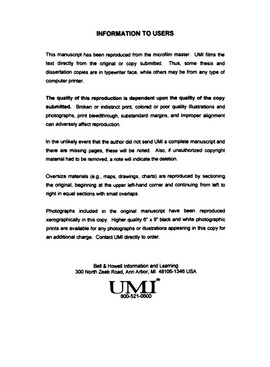| dc.contributor.advisor | Young, Roger A., | en_US |
| dc.contributor.author | Liu, Zhi-ming. | en_US |
| dc.date.accessioned | 2013-08-16T12:30:48Z | |
| dc.date.available | 2013-08-16T12:30:48Z | |
| dc.date.issued | 2000 | en_US |
| dc.identifier.uri | https://hdl.handle.net/11244/5905 | |
| dc.description.abstract | At the Gypsy Outcrop Site, OK, the depth of interest is less than 100 ft. 2-D seismic surveys used a shotgun as source. The signal/noise ratio is very poor. CMP stacking fails to produce interpretable reflections. Because of the implausible velocities from the outcrop velocity measurements, it is decided that the seismic modeling results are not reliable. A composite walk-away display convincingly illustrates that only one possible reflection event exists in the expanding spread profile survey. This event is estimated to be at the bottom of the shallow Gypsy sandstone unit. Survey parameters are recommended to improve the success of seismic reflection surveys faced with similar difficult circumstances. | en_US |
| dc.description.abstract | At the K-25 Site, Oak Ridge, TN, the zone of interest is from the very near-surface to 1800 ft depth. 2-D Vibroseis seismic reflection surveys were used in non-invasive radioactive waste remediation. Deeper targets due to larger layer impedance contrasts produce stronger reflections following hyperbolic traveltimes. The signal/noise ratio is much higher, and it is not a problem to obtain stacking velocities and hence interpretable stacked reflections. Special data processing techniques such as Vibroseis whitening, refraction statics, continuous spectral balancing have improved the stacked sections. Geological interpretaions are made based on stacked sections and surface geological observations. Iterative prestack depth-migration velocity analysis and prestack depth migration have resulted in more accurate depths to horizons and faults, which may influence waste migration in the K-25 vicinity and off-site. 3-D seismic exploration is recommended for future seismic reflection studies. | en_US |
| dc.description.abstract | The present work extends methods of noise reduction and velocity analysis used in conventional seismic reflection exploration (target depths of greater than 1000 ft) to near-surface seismic cases (target depths less than, or much less than, 1000 ft). Two study sites are treated, and the particular difficulties encountered require the use of unconventional approaches. | en_US |
| dc.description.abstract | In addition to the investigations of noise reduction and velocity analysis using data processing techniques existing, I have programmed the "Continuous Spectral Balancing" algorithm, based on the ideas of Pat Lindsey. I have designed and developed a new algorithm---"Local Slant-Sum Adaptive Noise Removal". Examples on synthetic and real data shot gathers show that both algorithms are effective. | en_US |
| dc.format.extent | vii, 186 leaves : | en_US |
| dc.subject | Geophysics. | en_US |
| dc.subject | Seismic reflection method. | en_US |
| dc.subject | Prospecting Geophysical methods. | en_US |
| dc.title | Methods of velocity determination and noise reduction in the processing of near-surface seismic reflection data. | en_US |
| dc.type | Thesis | en_US |
| dc.thesis.degree | Ph.D. | en_US |
| dc.thesis.degreeDiscipline | Conoco Phillips School of Geology and Geophysics | en_US |
| dc.note | Major Professor: Roger A. Young. | en_US |
| dc.note | Source: Dissertation Abstracts International, Volume: 60-12, Section: B, page: 5990. | en_US |
| ou.identifier | (UMI)AAI9957002 | en_US |
| ou.group | Mewbourne College of Earth and Energy::Conoco Phillips School of Geology and Geophysics | |
